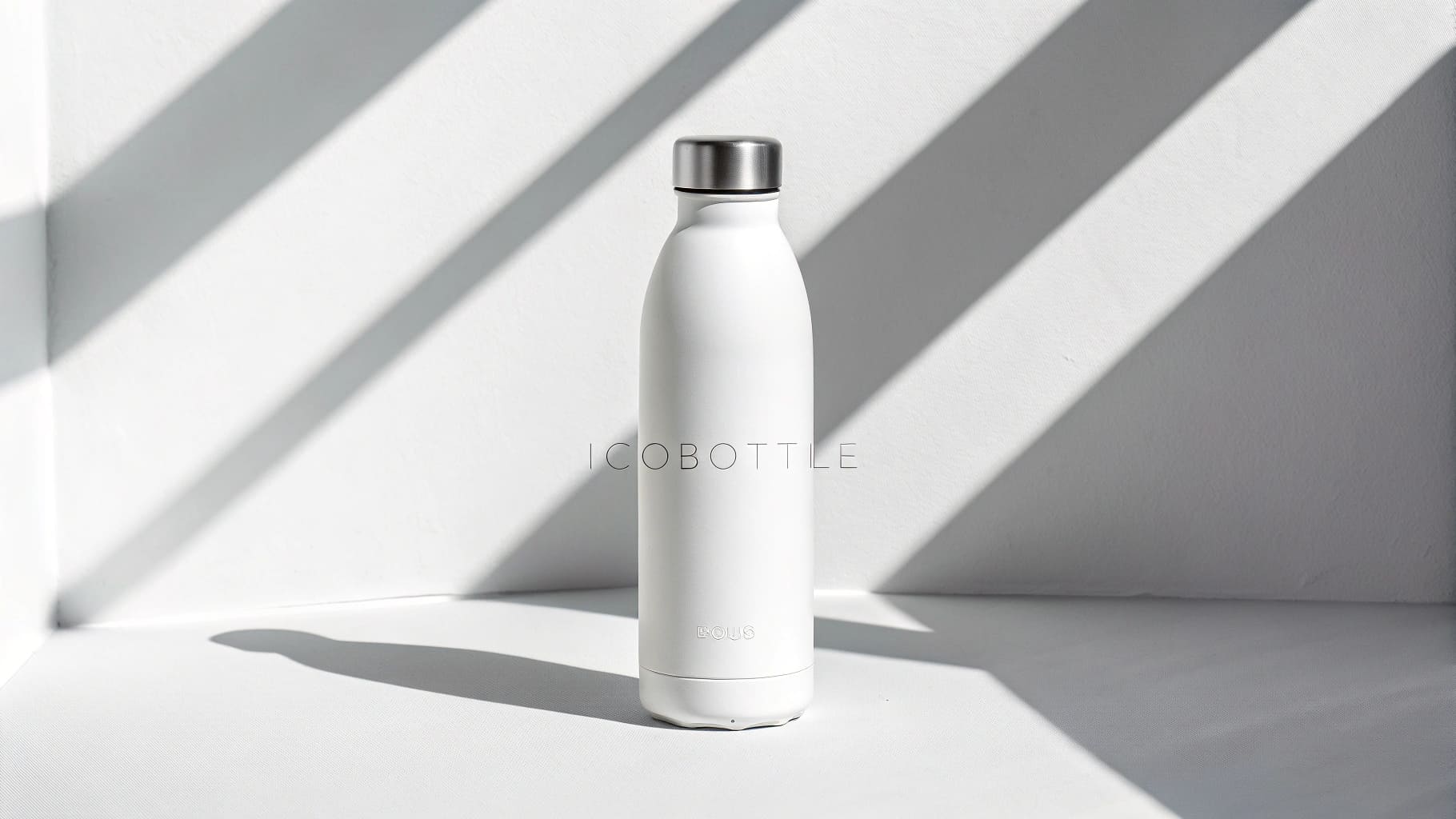Are you worried about the real cost of insulated bottles? Hidden fees and quality issues can hurt your business. Learn to see the true value.
Yes, you can get your money's worth with insulated water bottles. The key is understanding material quality, manufacturing, and supply chain factors. This knowledge helps you make profitable B2B decisions and avoid hidden pitfalls, ensuring value beyond the initial price.

It's clear that the upfront price isn't the whole story. As a business owner, like Mark from Canada, you know that understanding every angle is crucial. So, let's dig deeper into what really makes up the cost and value of these popular products. I've been in this business with Icobottle for years, exporting quality stainless steel products, and I want to share what I've learned.
How much is the reusable water bottle market worth?
Wondering about the reusable bottle market's size? Ignoring this growing trend could mean missed profits. Let's look at the impressive figures and opportunities.
The global reusable water bottle market1 is huge and growing fast. It was valued at USD 10.52 billion in 2024. Experts expect it to reach USD 15.61 billion by 2032, showing strong, steady growth for businesses like yours.
[image placeholder]
I've seen this market expand firsthand from my base here in China. The numbers are quite exciting for anyone in the B2B space, especially for procurement officers or startup bosses looking for reliable products. The global reusable water bottle market is not just big; it's getting bigger every year. It hit USD 10.52 billion in 2024. It's projected to shoot up to USD 15.61 billion by 2032. That's a compound annual growth rate (CAGR) of around 4-5%. This is significant news.
Key Growth Factors
So, what's pushing this growth? A major factor is growing environmental awareness2. People everywhere are more concerned about plastic waste. They are actively moving away from single-use plastic bottles. I see this demand shift in my own business, Icobottle, when dealing with clients in America and Europe. Consumers also want healthier lifestyle options and see reusable bottles as part of that.
Why B2B Buyers Should Care
Understanding these market dynamics is crucial. For importers and wholesalers, knowing the "real cost" and market potential helps make profitable decisions. It's not just about selling a bottle; it's about tapping into a conscious consumer trend. This growth means more opportunities. It also means more competition, so smart sourcing is key. My customers, like Mark, need to be aware of these trends to stay competitive.
Here's a simple look at the market size:
| Year | Estimated Market Value (USD Billion) |
|---|---|
| 2024 | 10.52 |
| 2032 | 15.61 (Projected) |
This growth isn't just a number; it's a clear signal for businesses to invest wisely in reusable options. It shows a sustained demand that B2B buyers can confidently build upon.
What is the hidden cost of water bottles?
Thinking the listed price is the final cost? Hidden expenses in water bottles can eat your profits. Let's uncover what you might be missing.
Hidden costs in water bottles go beyond the factory price. They include material quality, manufacturing precision, supply chain issues, customization needs, and ethical production. Recognizing these helps B2B buyers like Mark avoid surprises and ensure true value.

From my experience selling stainless steel bottles at Icobottle, the price tag is just the start. Many B2B buyers, especially those new to sourcing from developing countries like China, overlook crucial 'hidden costs'. Let me break them down. These are important for procurement officers who are sensitive to quality but also seek competitive pricing.
Material Quality and Sourcing
The grade of stainless steel is vital. We typically use 304, also known as 18/8 food-grade stainless steel, for our hip flasks, water bottles, and coffee mugs. This impacts durability, rust resistance, and safety. Cheaper materials might save money upfront but can lead to problems later, like rust or a metallic taste. This is a major concern for quality-conscious buyers. Always ask for material certifications; this is something Mark always focuses on.
Manufacturing Processes and Quality Control
How the bottle is made, especially the double-wall vacuum insulation, defines its performance. A tiny defect in the vacuum seal means the bottle won't keep drinks hot or cold. This is a big concern for someone like Mark, who resells these under his own brand. We always recommend asking about quality control steps. I even suggest independent sample testing for large orders, especially if you're dealing with a new supplier. Good quality control prevents issues like those Mark has faced with delayed shipments or faulty products.
Supply Chain Complexities
Costs for raw materials like stainless steel can change. Shipping fees fluctuate. Import tariffs, like those between China and the U.S. or Europe, can add a lot to the final cost. For instance, changes in tariffs can impact the pricing strategies for B2B importers. Building good relationships with suppliers and understanding logistics helps manage these. Efficient communication here is key to avoid delays, a common pain point.
Customization and Innovation
Most of my customers want custom logos or colors on their tumblers and cups. Unique designs or features like smart lids cost more to produce. But they also allow you to charge a higher price and differentiate your product in the market. It's a balance between added cost and added value.
Sustainability and Ethical Production
More buyers now ask about using recycled stainless steel or ethical labor practices. This might add a little to the cost. But it's a strong selling point, especially in markets like America and Europe where consumers are increasingly conscious of these issues. Transparency in certification is also vital to avoid fraud.
Here’s a summary of where costs can hide:
| Hidden Cost Area | Key Consideration for Buyers | Impact on Mark's Business (Example) |
|---|---|---|
| Material Grade | Insist on 304/18/8, ask for certs | Ensures product quality, avoids customer complaints |
| Insulation Technology | Verify vacuum seal integrity, request QC reports | Prevents faulty products that damage brand reputation |
| Shipping & Tariffs | Factor in variable logistics and import duties | Affects final landed cost and profit margins |
| Customization | Balance unique features with production costs | Allows for rebranding and premium pricing in Canada |
| Ethical Sourcing | Consider as a value-add and brand builder | Meets consumer demand, reduces risk of supplier fraud |
Understanding these helps avoid surprises and ensures you get what you pay for. It helps buyers like Mark, who understand sales but lack deep technical expertise, to ask the right questions.
Is it cheaper to buy single-use plastic water bottles?
Do single-use plastic bottles seem like the cheaper option? Their low price hides huge environmental costs and missed branding opportunities. Let's compare the real value.
For a single purchase, plastic bottles are cheaper. But for B2B buyers3 and the planet, reusable stainless steel bottles offer far better long-term value. They reduce waste, build brand reputation, and align with what modern consumers want from businesses.

I often talk to business owners like Mark, who are weighing costs. The question of single-use plastic bottles4 versus reusable ones comes up. Yes, at a shop, a plastic water bottle is very cheap for the end consumer. But as a B2B buyer or wholesaler, the calculation is different for us. My company, Icobottle, focuses on stainless steel products precisely because of this long-term value.
The Deception of "Cheaper"
The low price of a single-use plastic bottle is only for that one transaction. It doesn't account for the massive environmental cost. These bottles contribute heavily to plastic waste in our landfills and oceans. I see this as a major problem we can help solve. Governments around the world are also noticing. They are putting new rules and taxes in place to discourage single-use plastics. This actually creates more business for reusable bottles like the ones we make at Icobottle. For someone like Mark, who sources from developing countries, anticipating these regulatory shifts is important.
The B2B Advantage with Reusables
For businesses, investing in good quality insulated stainless steel bottles makes more sense, even if the first cost is higher. Here’s why:
- Higher Perceived Value and Brand Reputation: A sturdy, well-made stainless steel bottle feels premium. This reflects well on your brand if you customize it with your logo. This is key for Mark's model of rebranding and selling at a premium.
- Increased Customer Loyalty: Customers appreciate products that last and work well. A good reusable bottle is used daily, keeping your brand in front of them.
- Potentially Better Profit Margins: In a growing market, especially with custom designs or top-quality features, you can achieve good profit margins. This aligns with Mark's goal of seeking competitive pricing from suppliers like us in China, to maximize his returns in Canada.
- Alignment with Consumer Values: More and more consumers care about sustainability. Offering reusable bottles shows your business is responsible.
Here’s a quick comparison for B2B buyers:
| Feature | Single-Use Plastic Bottles | Reusable Stainless Steel Bottles (e.g., from Icobottle) |
|---|---|---|
| Initial Procurement Cost | Very Low | Higher |
| Brand Building Potential | Low / Negative (if seen as wasteful) | High (associates brand with quality, sustainability) |
| Environmental Impact | High Negative | Low (durable, recyclable, reduces waste) |
| Long-Term Customer Value | None | High (repeated use, positive association) |
| Regulatory Risks | Increasing (bans, taxes) | Decreasing / Favorable (incentives, demand) |
| Perceived Quality | Low | High (especially with good materials and finish) |
So, while a plastic bottle is cheaper to buy once, high-quality reusable bottles are a much smarter investment for long-term business success and brand image. For B2B players like Mark, focusing on quality inspection and reliable certification for stainless steel bottles leads to a more sustainable and profitable business in the long run.
Conclusion
Understanding the real costs of insulated bottles, from market trends to material details, empowers smart B2B purchasing. Quality and sustainability offer true long-term value.
-
Explore this link to gain insights into the market's growth and potential, helping you make informed business decisions. ↩
-
Understanding the link between environmental awareness and consumer choices can guide your marketing strategies effectively. ↩
-
Discover the advantages B2B buyers gain from investing in reusable products, including better profit margins and customer loyalty. ↩
-
Learn about the significant environmental costs associated with single-use plastic bottles and why they are a poor choice for sustainability. ↩

